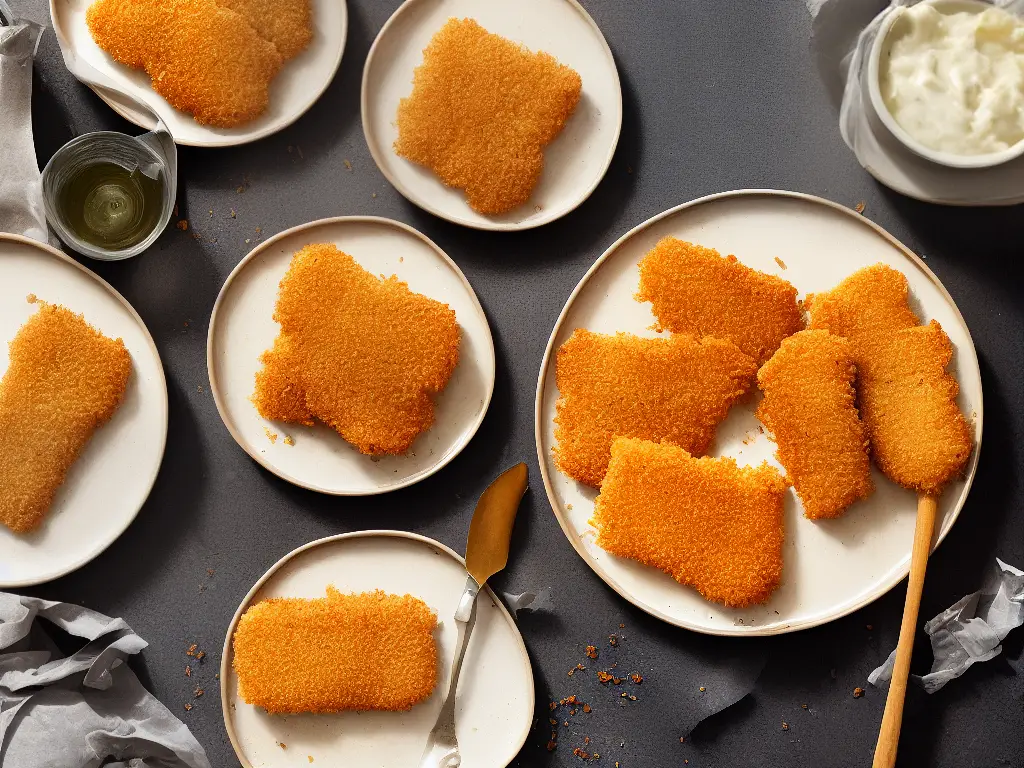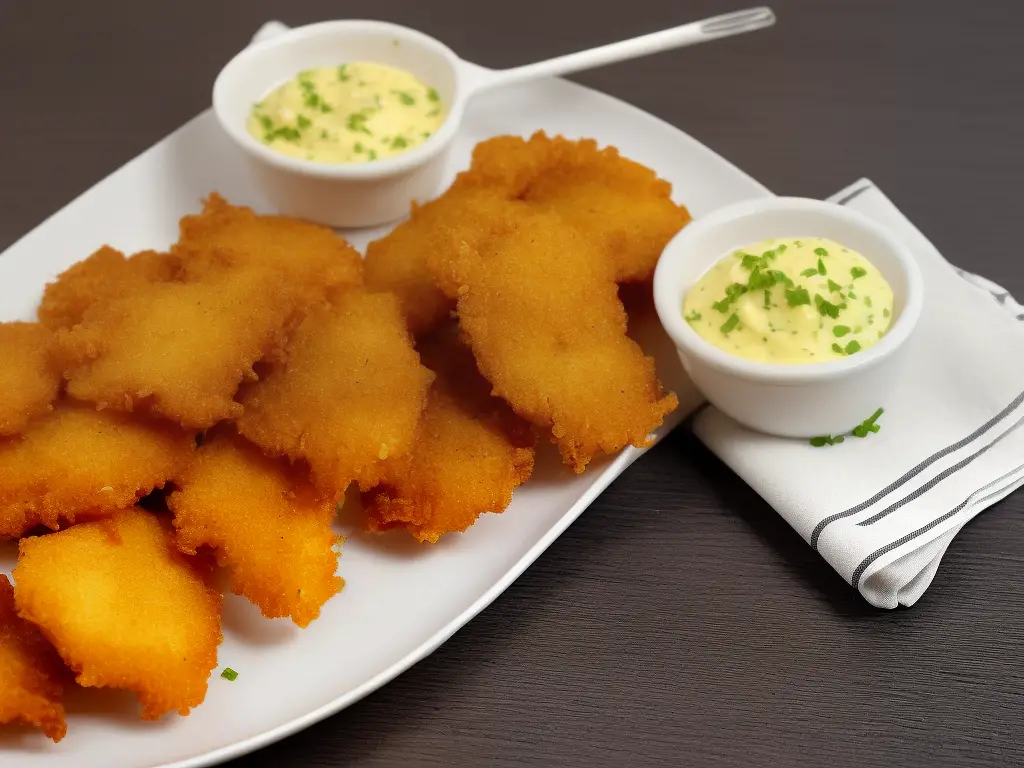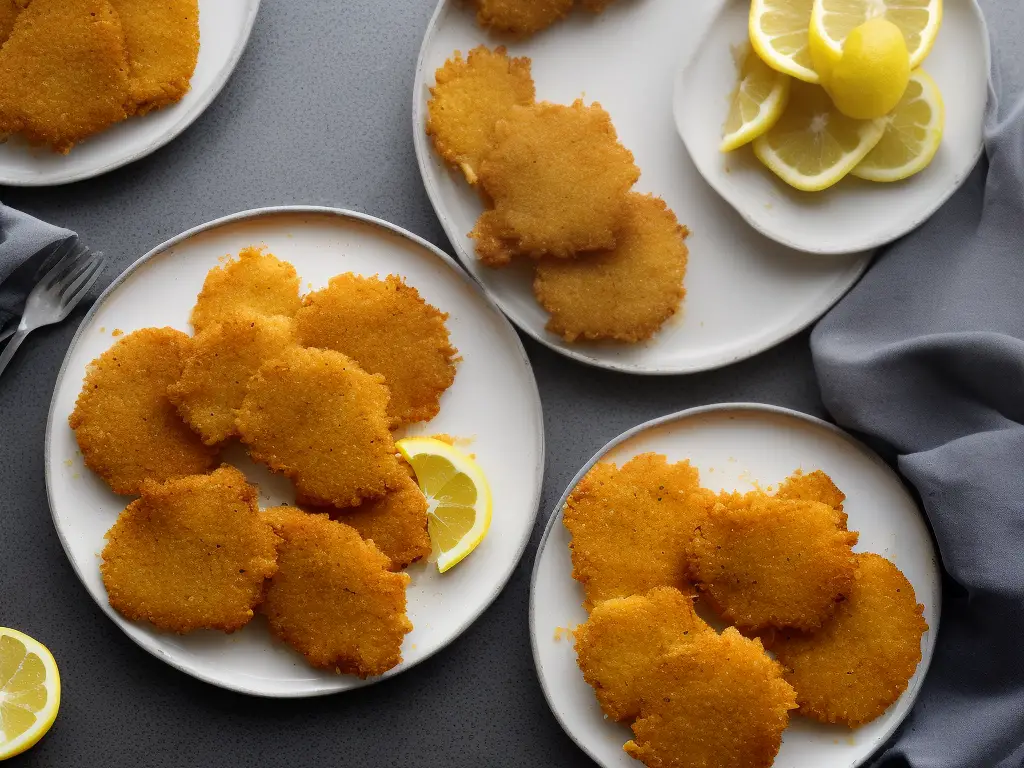Delving into the world of breaded fish, McPatitas emerges as a popular and scrumptious choice for many young adults. This culinary delight, which has been embraced by food enthusiasts across the globe, offers a delightful taste in addition to an interesting history, diverse preparation techniques, and varying cultural adaptations. Through exploring its origins, development, nutritional value and more, we are able to gain insight into the significance of McPatitas breaded fish in today’s food landscape
History of McPatitas breaded fish
McPatitas breaded fish has an interesting history, dating back to the time when quick and easy-to-make food options were on the rise. In the mid-20th century, amidst rapid urbanisation and increasing demand for convenient food services, food companies started venturing into the world of breaded fish products. McPatitas breaded fish was a result of this market trend, providing an option for people seeking a tasty and hassle-free seafood dish. The origin of McPatitas breaded fish can be attributed to the need for diversification in the fast food industry, creating an iconic product that blended the appeal of fried fish with the instant satisfaction provided by rapid food services.
Over the years, the development of McPatitas breaded fish has been duly influenced by the ever-changing nature of consumer preferences and the introduction of new technologies in food production. Innovations in food science have given birth to the use of advanced breading techniques, layered coatings, and better quality fish, which have greatly enhanced the overall taste and texture of McPatitas breaded fish. Concurrently, the seafood industry has witnessed an upsurge in sustainable fishing practices, which has subsequently aided in making McPatitas breaded fish a more ecologically responsible option for consumers.
As a testament to the significance of McPatitas breaded fish in the food industry, the product has been incorporated into the menus of several prominent food chains and restaurants across the globe. Its indubitable popularity has also spurred the emergence of similar breaded fish products, challenging the market position of McPatitas breaded fish. However, the continued dedication of the brand to improving the quality of its product has allowed McPatitas breaded fish to hold onto a loyal consumer base that values its distinct and delicious taste.
In contemporary times, McPatitas breaded fish has aligned itself with the growing prevalence of health-conscious trends and initiatives by incorporating the use of healthier oils in the frying process. Additionally, the use of sustainably sourced fish demonstrates the brand’s commitment to addressing dietary and environmental concerns. Furthermore, innovations in packaging technology have enabled better preservation of McPatitas breaded fish, resulting in less wastage and higher product shelf life.
One of the defining aspects of McPatitas breaded fish in the food industry has been its enduring appeal as a swift and convenient product without sacrificing taste and quality. Despite the arrival of numerous competitors and the introduction of alternative breaded fish options, the popularity of McPatitas breaded fish continues to stand the test of time. The constant adaptation and evolution of McPatitas breaded fish serve as a testament to its importance in modern food culture, displaying the significance of both innovation and tradition in catering to consumer preferences in an ever-changing market.

Ingredients and preparation
One of the primary ingredients in McPatitas breaded fish is, naturally, the fish itself. Typically, white fish such as haddock or cod is used due to their flaky texture and mild flavour. In order to ensure sustainability and responsible sourcing, it is crucial that the fish used meet guidelines set by international organisations such as the Marine Stewardship Council (MSC). This ensures that the fish are caught using methods that minimise damage to the marine environment and adhere to responsible fishing practices.
Another essential component of the McPatitas breaded fish is the breaded coating. This coating is made up of various ingredients, including flour, breadcrumbs, and seasonings.
Using a good quality flour will provide a light, crisp texture to the coating, while breadcrumbs made from freshly baked bread can improve the overall flavour. The seasoning mix is usually a blend of herbs and spices, such as paprika, garlic powder, and parsley, which add depth and complexity to the final product. Some recipes may also include grated cheese for added richness and flavour.
The preparation of McPatitas breaded fish involves several steps that ensure a uniform, flavourful coating on each piece of fish.
The fish fillets are first dipped in seasoned flour, coating them evenly and providing a base layer for the breadcrumbs to adhere to. They are then dipped in a whisked egg mixture, typically consisting of eggs beaten with a small amount of milk or water, which acts as a binding agent. Finally, the fish fillets are rolled in the seasoned breadcrumb mixture, ensuring a thorough and even coating.
Frying is the preferred cooking method for McPatitas breaded fish, as it lends the dish its signature crispy, golden-brown exterior. It is crucial to use an oil with a high smoke point, such as vegetable or sunflower oil, to withstand the high temperatures needed for frying.
The breaded fish fillets are carefully lowered into the hot oil using a slotted spoon, making sure not to overcrowd the pan; this can cause the temperature of the oil to drop, resulting in an uneven and soggy breading. The fish is cooked for a few minutes on each side until it reaches a golden-brown colour and a crispy texture.
Besides responsibly sourced fish, other factors contribute to the quality and environmental impact of McPatitas breaded fish. Ideally, the breadcrumbs should be made from leftover bread, reducing food waste. Furthermore, the oil used for frying can be filtered and reused for future batches or repurposed for other dishes to avoid wastage. Considering these factors, one can enjoy a delicious and responsibly prepared McPatitas breaded fish dish.

Cooking techniques
An essential technique for making impeccable McPatitas breaded fish is the breading process. To achieve a proper breading, the fish must be suitably seasoned and coated in a combination of flour, beaten eggs, and breadcrumbs. This is typically done through a three-step process: Firstly, dredge the fish fillets in flour, ensuring they are coated evenly. Then, dip the floured fillets into the beaten eggs. Finally, coat the fillets in breadcrumbs, gently pressing them to ensure they adhere well. This three-step process creates a crispy barrier that seals in moisture and flavour, resulting in delicious and tender McPatitas breaded fish.
Another vital cooking technique for producing the best McPatitas breaded fish is the frying method. Proper frying is crucial to achieve the distinctive crunchy texture of the breading while ensuring that the fish cooks evenly. Using a deep-frying method with oil heated to a temperature of 180°C (350°F) is highly recommended. Carefully lower the breaded fillets into the hot oil using tongs or a slotted spoon. The fillets should be fried for 3 to 4 minutes per side or until they reach an internal temperature of 63°C (145°F), ensuring a golden brown crust without overcooking the fish.In addition to the proper frying temperature, selecting the appropriate type of oil for frying is another important factor in creating perfect McPatitas breaded fish. Choose an oil with a high smoke point, such as vegetable or sunflower oil, to allow for high-temperature frying without smoking or breaking down. This is key to avoid any undesirable flavours or potential health risks associated with overheated oils.Once the McPatitas breaded fish fillets have finished frying, it is crucial to drain them properly to remove any excess oil. This can be done by placing the cooked fillets on a wire rack lined with paper towels for a few minutes. This step helps to preserve the crispiness of the breading while preventing excess oil from saturating the fish, maintaining the desired balance of flavours and textures.Lastly, one should not forget the importance of a simple yet delicious sauce or dip to accompany their homemade McPatitas breaded fish. A popular choice is tartare sauce, which can be easily made by combining mayonnaise, capers, gherkins, and fresh herbs such as parsley and dill. Other condiments, such as ketchup or a spicy mayo, can also be used to enhance the overall dining experience and tailor the dish to personal tastes.

Nutritional value
Following on from this, it is worth considering the nutritional content of McPatitas breaded fish to understand how it fits into a varied and balanced diet. This includes examining the macronutrient composition, such as proteins, fats, and carbohydrates, as well as the micronutrient content of this dish, which comprises vitamins and minerals. By doing so, young adults can enjoy their homemade McPatitas breaded fish, knowing they are making informed choices about their meal options.
A pivotal component of McPatitas breaded fish is the fish itself, which generally provides an abundance of high-quality protein, consisting of essential amino acids that support various bodily functions like growth, repair, and maintenance of tissues. The presence of essential fatty acids, predominantly omega-3, is another noteworthy nutritional attribute associated with fish consumption. These fatty acids have been widely recognised for their multiple health benefits, such as promoting heart health, counteracting inflammation, and supporting brain function. The breading typically envelops the fish, while it contributes to the texture and taste, it also acts as a source of carbohydrates and dietary fibre.
The preparation method of McPatitas breaded fish plays a significant role in determining its nutritional value, as deep-frying tends to increase the overall fat content. Therefore, it’s crucial to keep in mind the amount and type of oil employed in frying as it will directly impact the quality of fats. Opting for healthier oils like olive or canola oil and consuming the breaded fish in moderation can significantly alleviate concerns associated with excessive saturated fat intake.
The presence of micronutrients in McPatitas breaded fish mainly depends on the type of fish used and the ingredients incorporated within the breading mixture. Fish is generally known to be an excellent source of essential minerals such as phosphorous, potassium, selenium, and iodine. Additionally, it contains vitamins like B-complex (B6 and B12) and vitamin D, which are indispensable for energy metabolism, red blood cell production, and immune function. The breading mixture could also be fortified with micronutrients, contributing further to the overall nutritional profile of the meal.
In conclusion, understanding the nutritional value of McPatitas breaded fish is a fundamental aspect of appreciating its role within a healthy diet. The protein, omega-3 fatty acids, and certain micronutrient content attest to its potential nutritive benefits; however, the preparation method, type of fish, and breading composition can significantly influence these attributes. As such, consuming McPatitas breaded fish in moderation and balancing its palatability and nutritional appeal with a well-rounded and health-conscious diet are essential.

Food safety and storage
Moving on, one of the essential aspects of ensuring the quality and taste of McPatitas breaded fish is proper food safety and storage. To begin with, it is crucial to store the breaded fish at the appropriate temperatures to maintain its freshness and prevent any potential bacterial growth. The ideal temperature for storing McPatitas breaded fish is at or below 4°C (40°F) in the refrigerator or below -18°C (0°F) in the freezer. Keep the fish in its original packaging or use airtight containers or freezer bags to prevent any cross-contamination with other food items.
When handling McPatitas breaded fish, it is vital to practice good hygiene to avoid any contamination. Always wash your hands with soap and water before touching the fish or any other food items. Use separate utensils, cutting boards, and plates for raw and cooked fish to prevent cross-contamination between uncooked and cooked food products. Moreover, avoid letting the fish come in contact with other foods, including raw meats, poultry, or vegetables, to minimize the risk of foodborne illnesses.
When preparing McPatitas breaded fish, it is equally important to ensure that it is cooked thoroughly to kill any potential bacteria. Baking, grilling, or frying the fish at the recommended temperature of 180°C (350°F) for about 15 to 20 minutes will both secure the flavors and ensure that your dish is safe to consume. Using a food thermometer can help confirm that the internal temperature of the fish has reached at least 63°C (145°F), which is the safe minimum temperature for consuming cooked fish.
In cases where you might have leftovers, proper storage is crucial to maintain the quality and safety of the McPatitas breaded fish. Leftovers should be cooled down as quickly as possible, ideally within two hours of cooking, before being stored at the correct refrigeration or freezer temperatures. Store the leftover fish in airtight containers or wrap them tightly in aluminum foil or plastic wrap to prevent cross-contamination and maintain their freshness. It is advisable to consume refrigerated fish leftovers within three to four days or frozen leftovers within three to six months for the best quality and flavor.
Finally, it is crucial to remember the significance of properly thawing McPatitas breaded fish before cooking. Thawing the fish in the fridge is considered the safest method, as it maintains a consistent temperature, reducing the risk of bacterial growth. Alternatively, you can thaw the fish using cold water or the defrost setting on your microwave, but it is vital to cook the fish immediately after thawing in these cases. By following these food safety practices, storage, and precautions, you can enjoy tasty and risk-free McPatitas breaded fish dishes.

Health considerations
McPatitas breaded fish can be an appetising and convenient option for young adults looking to enjoy a delicious meal, when enjoyed responsibly. Breaded fish can provide some key nutrients that are beneficial for health. For example, fish naturally contains essential omega-3 fatty acids, which are known for their role in promoting a healthy heart, brain, and joints. Additionally, fish is a good source of high-quality protein, which is essential for growth and maintaining muscles and other tissues. Therefore, incorporating McPatitas breaded fish into your diet in moderation offers a scrumptious and nutritious way to satisfy your tastebuds.
However, there can be some drawbacks to consuming McPatitas breaded fish regularly. One concern is the additional calories and fats present in the breading, particularly if the fish is fried. This may lead to weight gain, especially if consumed in large quantities and without balance from other healthier foods. Additionally, the breading may also contain high levels of sodium, which can contribute to an increased risk of developing high blood pressure if consumed excessively.
Another important consideration for including McPatitas breaded fish in your diet is the quality of the fish itself. In some cases, lower-quality fish may be used in breaded products, which can be high in pollutants and heavy metals such as mercury. It’s crucial to know the source of the fish and choose products made from sustainably sourced and well-regulated fisheries.
Moreover, including McPatitas breaded fish in your diet could also have an impact on your overall nutrient intake. As the breading and any accompanying sauces might be high in unhealthy fats and simple carbohydrates, it is important to balance this dish with other foods rich in fibre, vitamins, and minerals. This may include leafy greens, whole grains, and other lean protein sources.
In order to make the most of the benefits that fish can offer without the drawbacks, one may consider incorporating alternative preparation methods, such as grilling or baking, into one’s routine. These cooking techniques tend to use less oil and therefore add fewer calories and unhealthy fats to the dish. Additionally, choosing whole, unprocessed fish more often than breaded fish can help ensure that one is reaping the full nutritional benefits of this valuable food source.

Cultural and regional variations
One of the fascinating aspects of McPatitas breaded fish is how it has been adapted and embraced by different cultures and regions worldwide. Examining the various international iterations of this popular dish reveals it reflects the diverse tastes, available ingredients, and culinary techniques that make each culture unique. The dish’s adaptability is particularly impressive, as it can be tailored to suit the preferences of each locale while still preserving the essence of the original recipe.
In Latin America, for example, McPatitas breaded fish has taken on a distinct local flair. A prime example is the incorporation of regional spices and flavours like aji amarillo, a bright orange chilli pepper that adds a unique, smoky taste to the fish. Latin American versions of the dish may also be served with a side of zesty chimichurri sauce, made from parsley, cilantro, garlic, and vinegar, providing a tangy contrast to the breaded fish’s crispy texture.
Venturing across the ocean to Asia reveals yet another delightful variant of McPatitas breaded fish. Countries such as Japan maintain a rich tradition of using seafood in their culinary repertoire, so it comes as no surprise that breaded fish is well-established in their local food offerings. One example is the fusion of McPatitas breaded fish with Japanese tempura, a beloved cooking technique involving a lightly-battered and deep-fried seafood or vegetable. By merging these two concepts, this creates a dish that boasts an irresistibly light and crispy coating that truly enhances the flavours and textures of the fish.
Travelling further west to Europe, McPatitas breaded fish experiences a luxurious transformation in countries such as Italy. Here, the humble breaded fish is elevated with the addition of aromatic ingredients like fresh basil, sundried tomatoes, and olives. The fish may also be breaded using Italian breadcrumbs infused with garlic, parsley, and Parmesan cheese, creating a fragrant and flavoursome meal. Regional accompaniments, including a zingy tomato sauce or a creamy risotto, are often served on the side, ensuring the dish is a true feast for the senses.
Transcending geographical boundaries, McPatitas breaded fish can even be found in the cuisine of the Middle East, where culinary traditions have been shaped by a rich tapestry of regional influences and flavours. The breaded fish may be seasoned with a blend of Middle Eastern spices like za’atar, sumac or baharat, lending a warm, earthy and aromatic depth to the dish. Breading options might also be adjusted to incorporate regional ingredients such as sesame seeds or ground nuts, adding a delightful crunch and nuttiness to the fish. With a final flourish, the dish may be presented with a drizzle of tahini sauce to complete this harmonious marriage of tastes and textures.

Throughout this exploration, we have unravelled the intriguing journey of McPatitas breaded fish from its inception to its presence in kitchens worldwide. By understanding the ingredients, preparation methods, and cooking techniques vital to its creation, we can appreciate the craftsmanship behind this dish. Furthermore, acknowledging the nutritional aspects, food safety practices, health considerations, and cultural variations of McPatitas breaded fish enriches our knowledge and allows us to experience this delicious treat on a deeper level, truly enjoying every scrumptious bite.
